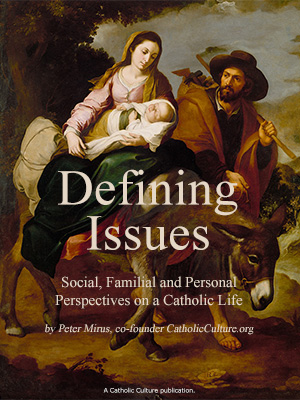Abortion and the Unborn Baby: the Painful Truth
The Painful Truth
by Paul Ranalli, M.D.
Dr. Ranalli is a lecturer in neurology at the University of Toronto and an executive member of the De Veber Institute for Bioethics and Social Research. He testified on fetal pain before the House Judiciary Committee of the State of Ohio.
In April 1996, and again in 1997 President Bill Clinton vetoed bills which would have banned partial-birth abortion. But new scientific evidence continues to emerge supporting the realization that the unborn children killed by this procedure likely experience a degree of pain too awful to imagine.
Our understanding of the development of the fetal nervous system and fetal pain perception has only crystallized over the past decade. It is now clear that the network which conveys pain in humans (the spino-thalamic system) is fully established and connected by 20 weeks. What has become even more apparent is that premature newborn babies, many born at the same gestational age as late-term aborted babies, likely feel even more pain than babies delivered at full term.
Elements of the pain system first appear much earlier, beginning with pain receptors under the skin of the face at eight weeks and early connections within the pain pathways of the spinal cord at seven weeks. The spinal cord is the "highway" that carries pain information from the limbs and trunk upward to the brain. By 20 weeks, the human fetal brain contains the full complement of one billion neurons in the gray matter, waiting to receive ascending pain impulses. The final connections between pain fibers and the gray matter neurons are completed in the period between 20 to 24 weeks. This is how we as adults "feel" pain; there is no reason to believe this is any different for humans inside the womb.
Observations of human fetal response to painful stimulation support this. A 1994 study published in England by Professor Nicholas Fisk showed that two types of hormones released during pain and stress rose to high levels when blood was drawn (for necessary testing) from the living fetus by puncturing the abdomen. As a "control" experiment, blood was drawn from the painless umbilical vein source in other cases; these unborn babies did not release the pain and stress hormones.
These observations were made in fetuses as early as 19 weeks of age. An earlier study by Dr. Joachim Partch of Kiel, Germany, detected similar hormones from the amniotic fluid as early as 16 weeks into the pregnancy.
Emerging research data from a number of studies now suggest that the late second-trimester fetus is capable, in fact, of experiencing more pain than babies born at term. At a conference on fetal and neo-natal pain held in Toronto in early April 1996, Dr. K.J.S. Anand, assistant professor of pediatric anesthesia at Emory University in Atlanta and one of the world's foremost authorities on fetal pain, reviewed a number of recent observations:
the magnitude of metabolic and other stress responses to invasive procedures and surgical operations is three to five times greater in premature babies than in adults who undergo similar types of surgery
higher concentrations of anesthetic drugs are required to maintain effective surgical anesthesia in premature babies than in older age groups
the premature spinal cord shows increased excitability to incoming sensations, including pain
premature babies withdraw from smaller degrees of pain than do full-term babies or adults (defined as a lower threshold of the cutaneous flexor reflex)
neurotransmitters (chemicals released by one nerve cell to relay a message to the next nerve cell) are found in abundance in the premature baby's spinal cord. Those neurotransmitters that mediate pain (substance P, L-glutamate, VIP, CGRP) are present in the second trimester; however, those transmitters from descending neurons that inhibit pain (5-HT, norepinephrine, dopamine) do not make their appearance largely until later in pregnancy. This suggests that the premature baby (or mid-to-late second-trimester fetus) lives through a vulnerable period when raw pain impulses from the body may roar through unchecked by the modifying inhibitory system (the "gate-control" mechanism) that we enjoy as adults.
In other words, the mechanisms by which the second-trimester fetus perceives pain are well established before mechanisms designed to blunt pain, which do not begin to develop meaningfully before 28 weeks.
These disturbing revelations raise issues which should ripple well beyond a basic science discussion, beyond even the established battle lines of the abortion debate itself. The question arises, how can we allow this?
Site comments to: [email protected]
This item 1045 digitally provided courtesy of CatholicCulture.org






